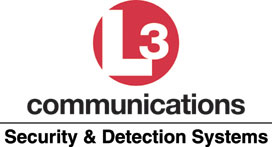
WOBURN, Mass. – L-3 Security & Detection Systems announced today that its eXaminer® XLB explosives detection system (EDS) has passed the European Union Commission Regulation Standard 3 for Aviation Safety under the European Civil Aviation Conference (ECAC) Common Evaluation Programme of Security Equipment (CEP). The system was successfully tested by the Service Technique de l’Aviation Civile (STAC), the engineering department of France’s aviation regulatory agency.
The eXaminer XLB is the first high-speed CT EDS to achieve EU Standard 3 approval under the new CEP and delivers operational throughput greater than 1,200 bags per hour.
“The eXaminer XLB is the highest-performing in-line CT EDS available and the only EU Standard 3 system with sufficient throughput for European Level 1 operation,” said Thomas M. Ripp, president of L-3 Security & Detection Systems. “We continue to invest in the eXaminer platform to meet current and future EU standards.”
Featuring a meter-wide tunnel, the eXaminer XLB generates high-resolution 3-D image data for explosives detection by combining helical CT with dual-energy imaging. Using 3-D Continuous Flow CT technology, the system generates high-resolution medical quality images in real time. With advanced tools that include 360-degree rotational views of entire bags and individual threat objects, operators can quickly and confidently clear bags for flight or designate bags for search.
Since 1998, L-3 has used medical-grade imaging technology developed for aviation security with an understanding of the complex demands faced by airport personnel and regulatory agencies around the globe. Nearly 1,000 eXaminer systems have been deployed at airports domestically and internationally and supported by L-3’s world- service organization.

About L-3 Security & Detection Systems With a broad range of systems and technology and an installed base of more than 20,000 systems worldwide, L-3 Security & Detection Systems offers screening technologies for numerous security applications that include aviation systems for hold baggage explosives detection and checkpoint screening, cargo and air freight screening, port and border inspection, and facility protection. L-3 Security & Detection Systems’ customer base includes the U.S. military and numerous government agencies, major airports and airlines, national and local authorities, and high-risk commercial enterprises throughout the world. To learn more about L-3 Security & Detection Systems, please visit the company’s website at www.L-3com.com/sds.
About L-3 Communications Headquartered in New York City, L-3 employs over 62,000 people worldwide and is a prime contractor in C3ISR (Command, Control, Communications, Intelligence, Surveillance and Reconnaissance) systems, aircraft modernization and maintenance, and government services. L-3 is also a leading provider of a broad range of electronic systems used on military and commercial platforms. The company reported 2010 sales of $15.7 billion. To learn more about L-3, please visit the company’s website at www.L-3com.com.
For more information, contact Theresa Taft, Public Relations L-3 Security & Detection Systems Phone: 781-939-3806 Email: Theresa.Taft@L-3com.com
Safe Harbor Statement Under the Private Securities Litigation Reform Act of 1995 Except for historical information contained herein, the matters set forth in this news release are forward-looking statements. Statements that are predictive in nature, that depend upon or refer to events or conditions or that include words such as “expects,” “anticipates,” “intends,” “plans,” “believes,” “estimates,” “will,” “could” and similar expressions are forward-looking statements. The forward-looking statements set forth above involve a number of risks and uncertainties that could cause actual results to differ materially from any such statement, including the risks and uncertainties discussed in the company’s Safe Harbor Compliance Statement for Forward-Looking Statements included in the company’s recent filings, including Forms 10-K and 10-Q, with the Securities and Exchange Commission. The forward-looking statements speak only as of the date made, and the company undertakes no obligation to update these forward-looking statements.
